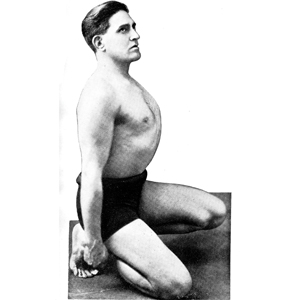How Yoga Intrigued America in the 1920s

Snapshots from Indian-American history
this month, that year
In the early decades of the 20th century, with very few South Asian immigrants in the United States, it was easy for the American public to conjure up fantastic ideas about yoga’s power and the itinerant men from India who taught it.
(Left) Yogi Wassan.
To learn about the part played by traveling yogis in toppling the Oklahoma
state government, read Deslippe’s entire article (“The
American Yoga Scare of 1927”) at https://www.saada.org/tides/article/20150910-4457 ... elections ... impeachment!
... While newspapers of the time liked to portray the average yoga student as a gullible, middle-class housewife, a close look at who was attending their classes and lectures reveal a disproportionate number of men and women who were doctors, lawyers, and professionals. It was also common for yoga teachers from India to have familiarity with some of the most famous and powerful people in the country. As just one example, Deva Ram Sukul was the respective healer, correspondent, and teacher to the actress Mae West, Conrad Hilton (the founder of the Hilton Hotels chain), and the wife of Igor Sikorsky (designer of the modern helicopter).
The exotic rendering of India that justified immigration restrictions and Christian missionary endeavors also allowed Americans to imagine an India that was filled with mystical masters that held secret wisdom and supernatural powers. A recurring (and often comedic) motif in the memoirs of early South Asian immigrants in the United States was the presumption that being from India automatically meant that they were one such master. In a time with only a few thousand South Asians in the United States, it did not take much for an Indian immigrant of reasonable savvy and intelligence to convince eager audiences that he was an adept yogi or divinely-ordained swami, and make a living out of this perception. With anti-Hindu sentiment and a series of exclusionary laws often blocking the path to many career opportunities or land ownership, this is just what many immigrants from India did, in both short trial runs of a few months and lengthy careers that spanned decades.

(Left) A class led by Yogi Wassan.
A close look at the lost history of early American yoga shows it to be an important subject in its own right, and one that intersects with many of the known figures and historical sites of South Asian American history. After his case for citizenship was heard by the Supreme Court, Bhagat Singh Thind taught meditation, pranayama, and basic asanas for over forty years. Bhagwan Singh Gyanee briefly dubbed himself “Yogi Bhagvan” and taught what he called “Humanology” for decades after his arrest and imprisonment for his involvement with the Ghadar Party as one of its leaders. Yogi Wassan and Deva Ram Sukul respectively left the lumber mills of the Pacific Northwest and nascent prospects as a journalist and businessman to start careers as traveling yoga teachers that took them both through Oklahoma City and one of the most tumultuous sagas in Oklahoma state history.
Theodore Fieldbrave, an Indian-born Baptist missionary who immigrated to the United States, told readers in a 1934 article that the East Indian population in the United States could be divided into four main categories. The first three categories are familiar: farmers, students, and skilled workers or merchants. The fourth category is startling: “The Hindu Swamis and Yogis” that Fieldbrave underestimated at “about 25 or 30.”
...
Philip Deslippe is a doctoral student in the Department of Religious Studies at the University of California, Santa Barbara.
Enjoyed reading Khabar magazine? Subscribe to Khabar and get a full digital copy of this Indian-American community magazine.
blog comments powered by Disqus












